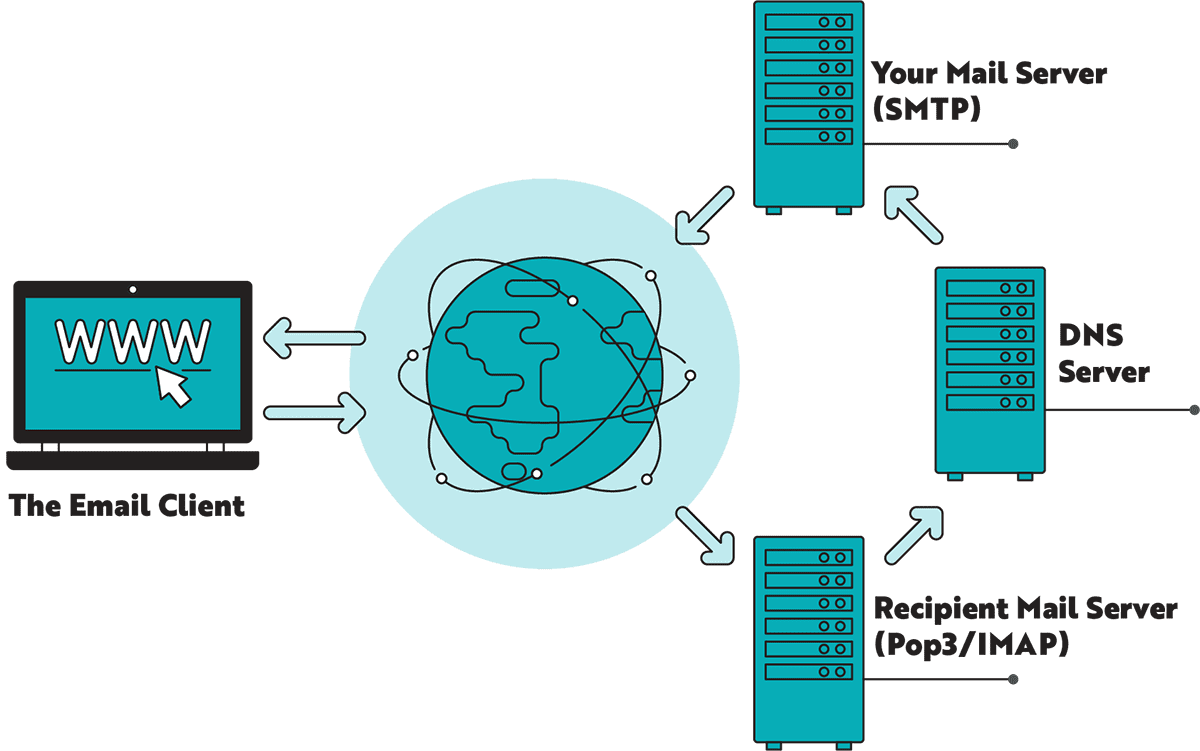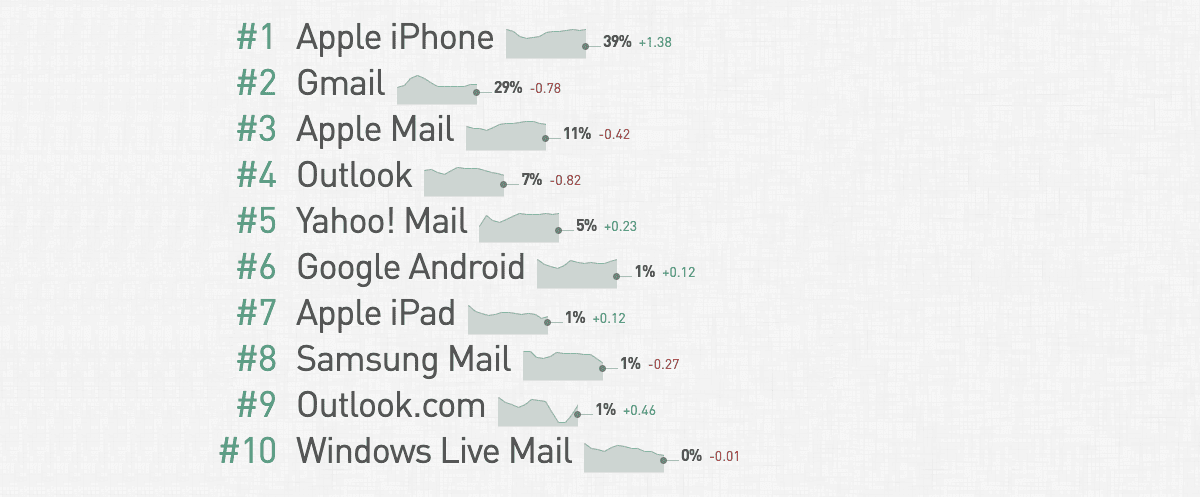It’s true that the demise of email has long been predicted, but I’d argue it’s far from dead and has actually evolved into something else, something altogether better.
The email has been around a long time in one form or another and actually pre-dates the internet by some time. The first example of an email was found on a program called MAILBOX on an MIT computer back in 1965. Designed for leaving messages on a computer terminal for the next user to see.
Hardly the global communication channel we see today, but everything starts somewhere.
In 1969, the US Department of Defense implemented ARPANET (Advanced Research Projects Agency Network), a network connecting numerous computers and a precursor to the internet we use today. This was the first step towards the version of the email we know today.
Then it happened. The dawn of the email as we know it.
In 1971, Ray Tomlinson invented electronic mail to run on ARPANET as a networked email system, giving almost instant messaging across the network. It soon caught on.
As the recognition for email grew, so did the complexities. The introduction of internal networks meant messages needed to know which network to go to. So along came Ray again, inventing the email address and giving us the @ sign we all know today …what a legend!
The idea was simply “username@name of computer”, which is essentially how it still works today, albeit with a much larger network and global address book to deal with.
We all take email for granted these days, it is an integral part of your everyday business (get up, make coffee, check email), but how much do we know about it?
I’ve been around the block (more than once) when it comes to tech, and regardless of the technology, as soon as it becomes a habit, it is expected to work every time, all the time. If it doesn’t, frustration kicks in and it becomes the thing you hate.
To alleviate that frustration, as a techy I need to understand the issue and all its moving parts ( ask my co-workers, this can become an obsession). This is partly my inner geek feeding its need for technical know-how, but it is also so I don’t get that feeling of frustration, ever again.
The advice here is “know thy enemy”, a little bit of knowledge can go a long way, both in fixing (or avoiding) issues, or finding new solutions that work even better.
So let’s dive into the details.

The diagram above shows the journey an email takes. In its simplest form, the process works like this;
Now you understand the process, let’s look at the technology that’s used.
There are three main protocols used for email, these are;
Hopefully, this gives you a basic understanding of the technologies and processes involved in your email, and if something goes wrong you can bask in the glory of knowing at least where it has gone wrong.
If however, reading this has made your eyes glaze over, or decide never to use email again, there is an alternative. Speak to us, we’re happy to advise on the best email services to fit your objectives.
We all use at least one email client and there are tons to choose from, some free and some paid for but mostly they are bundled into a “business” suite that includes other software (or apps) that you can use in your daily business life (Office365 or Google Workspace for example).
It used to be a simple question of “are you using a PC or Mac?”, then based on that it was usually a case of Outlook or Apple Mail. Then came along the juggernaut that is Google with Gmail who quickly superseded earlier browser-based clients like Yahoo and Hotmail and launched the first browser-based suite of business apps, including Gmail as the email client.
It didn’t end there, with the rapid rise of mobile devices new players emerged… or did they.
Now with Google, Apple and Microsoft all offering the same thing (in slightly different ways) it has become hard to pick them apart, they all offer great apps and email clients. So the battleground moved to the devices.
In my opinion, this is what should lead your decision on which email client to choose, if you’re a Microsoft user, go with them. If you have a Mac, go with them. If you live in a browser (as I do), Google is the way to go.
The main reason for this is that sticking to a provider allows you to use them to their full potential, making actions between different apps a breeze.
The below stats show the latest email client market share (source provided by http://emailclientmarketshare.com/), which sort of proves my point about being led by your device with Apple iPhone and Gmail way out in front.

I started this post by saying that email has evolved and it certainly has, it had no choice.
Like all mainstream communication methods, email has suffered from its fair share of negatives over the years. With the good guys behind the technology, the hosts and providers (like us), in a constant state of war with the bad guys (spammers, scammers, etc) trying to exploit its customers.
Rather than go into the detail of attacks such as; Phishing, Spear Phishing, and Business Email Compromise which are all designed to steal money or data by means of Malware or Ransomware I’d like to look at the impact these attacks have had.
The best way to explain what I mean is to focus on one particular type of attack that has arguably had the biggest impact on email, SPAM.

Let’s start by defining what SPAM is, simply put it is the mass transmission of unsolicited messages.
The first electronic (pre-email) version of SPAM actually dates back to 1864 when someone did it over telegraph (apparently). The first case of email spamming can be traced back to 1978 when Gary Thuerk sent 400 emails promoting an event, which he later claimed was a roaring success. However as this was on the old ARPANET it quickly annoyed the US Department of Defence, who told him to never do it again, so he never did.
It was some time before SPAM raised its head again, but when it did around 1994 it grew exponentially year on year and became the issue we all know and hate today.
Arguably the biggest impact this had was on how email was perceived. Once the shining light of digital communication, it spent years struggling to separate the good from the bad, meaning people’s inboxes were overflowing with junk, making it increasingly difficult for a legitimate email to stand out.
In 2014 it was reported that a massive 85% of email sent was SPAM, and at that time a whopping 182 billion emails were being sent every single day.
This is where its evolution comes in. To combat this vast number of messages, email needed to get clever. New security measures were implemented to make it harder for spammers to send emails (although it’s still possible), as well as global blacklists that keep email services and providers aware of the main offenders.
In addition to making it harder for these pesky messages to be sent, the receiving end, the email clients got smarter by recognising junk emails and filing them away. Over the years this has become more and more intelligent and today the majority of spam either never gets to your inbox, or is neatly filed away without you ever seeing it.
The flip side to this massive improvement is it’s difficult for legitimate email senders to get their messages into your inbox and even harder to do this in a way that makes the recipient trust it.
Luckily if you know what you’re doing, and use the right tools and strategies the rewards are arguably better than ever. Understanding the right services to use, and when to use them can go a long way to getting it right.
Next, we’ll take a look at some of these email services, and where they fit into your email sending toolbox.
Knowing what’s possible goes a long way to getting your email game where it should be, and sending the right email, at the right time, in the right way is the way to go.
Think of this as using an email address as a post forwarding address, anything that gets sent to either a single address ([email protected]) or an entire domain can be forwarded to another. This is useful when you have multiple versions of your domain name, like novainternet.uk and novainternet.co.uk.
This is the most basic form of email service, usually included when you buy web hosting, and should include all the features and security you need for sending and receiving without suffering from any attacks (not all hosts are the same). This is most commonly used as a starting point for a website, it’s cost effective and can function nicely alongside other email services (great for adding your side hustle to your main business email inbox).
As mentioned previously, this is the go-to option for businesses. Email, email client, business apps, and all the tools you need to manage it. Such as Google Workspace, Office365, etc. With everything built in for managing, securing, and using your inbox to its full potential, every business should seriously consider this option.
I could (and probably will) write an entire post on this section, this is a vital service to have available if you have a website (or online platform of any kind). These messages are still singular (to a single recipient) but using the right transactional email provider has massive benefits on delivery and domain reputation (more on this below). The best examples for these messages are e-commerce updates, confirmations, shipping updates, etc. This should be seen as the engine room for your business automation.
This is another service that deserves a full post. Where transactional emails are a scalpel, marketing emails are the sledgehammer. If used incorrectly you can bring your house down, if used in conjunction with the above services can deliver awesome results. The best example I can give here is monthly newsletters, updates, or launches. A well-cultivated list is important, they need to expect your email and trust it. This is where deliverability is paramount.
So for my next trick, we dive into the basics surrounding email deliverability.
Making sure your message gets delivered is vital, after all, what’s the point in sending something that never reaches its destination. Email deliverability, also known as “Inbox Placement” is how you ensure your message hits its intended target.
The majority of information I’ve come across whilst writing this post has all been about email marketing, and whilst this is probably the most relevant form of email communication for this section, the following information applies across the board. If you don’t have your business email setup correctly (even with your email service provider) then you will also fall foul of the “junk” folder, or worse a blacklist.
To avoid this happening to your email there are a number of things you can do.
A spam trap or email honeypot is an email address that is known to be dead but is still monitored by email service providers, or blacklist organisations. This allows them to spot people using old or generated data within broadcasts and is an indicator that the sender is sending spam.
Managing your data is key. It is tempting to think more is better when it comes to sending emails, but these days the truth is the absolute opposite, relevance and timing are the golden rules.
What you send plays a big part in avoiding the Junk folder. As mentioned earlier, email clients are looking for any excuse to bin your message.
The history of your email sending affects what you send moving forward. If you have sent suspect broadcasts in the past it will affect your deliverability. Managing this correctly is the way to avoid being blacklisted.
The following protocols were developed to enhance the SMTP protocol for sending emails. The idea is that only the domain admin has access to adding these authentication DNS records to the domain, so act as proof that the sender is who they say they are. These are essential for any email sending to ensure delivery.
As you can see, email has come a long way since its humble beginnings, starting out as a simple messaging system to now being a vital part of everyday business. It has certainly got more complex, but I guess that is the nature of technology.
We at Nova have been around for most of its lifetime, so understand the deep technical aspect of email delivery, and also all the right tools (and how to set them up), so if you ever face an email issue get in touch and we’ll be happy to help.